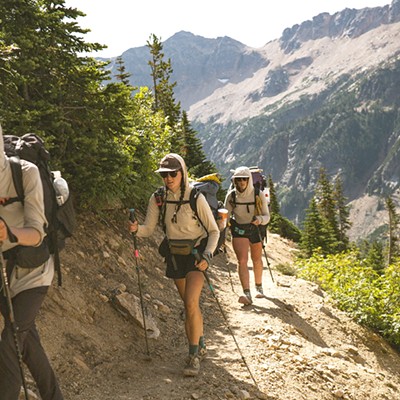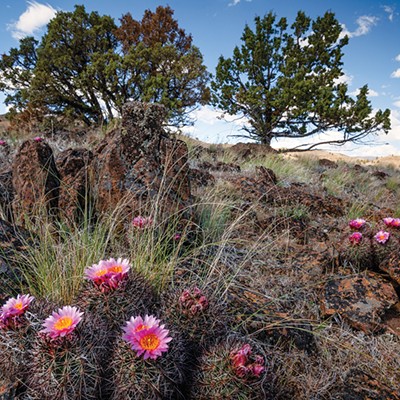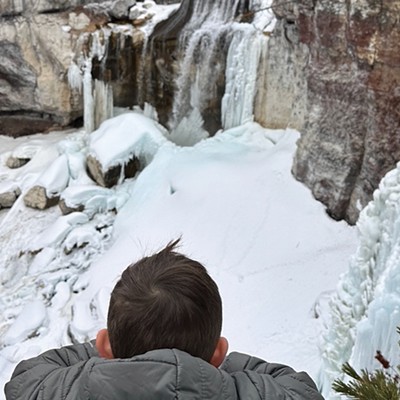This time next year there will be more to the latter run because the Condit Dam that creates the Northwestern Reservoir will have come down.
It's been 12 years since an agreement was signed between Washington's Skamania and Klickitat counties, tribal groups, and PacifiCorp to remove the dam. Finally, in August of this year, engineers started blasting a drainage tunnel close to the face of the dam. Come late this month, the tunnel will be completed and opened, draining the entire reservoir in six hours.
With the dam gone, the White Salmon will once again flow freely to its confluence with the Columbia River. Opening the river up once more should mean increased salmon runs and a riverbed that, once it's gone through a transformation, will offer up new opportunities to canoeists, kayakers and rafters.
In the meantime, paddlers and rafters are being asked not to make any trips through the deconstruction zone until September 2012. To stay abreast of what's going on go to whitesalmontimelapse.wordpress.com/
While access will be restricted during the Oct. 26 demolition, anyone interested in watching the blast, can tune into PacifCorps live stream of the event, which should be linked through the White Salmon wordpress blog.
Elation On The Elwha
Meanwhile on Washington's Olympic Peninsula, the future of Chinook salmon runs and whitewater paddling will soone take a turn for the better with the deconstruction of the 108-foot Elwha Dam followed shortly thereafter by the elimination of the 210-foot Glines Canyon Dam. Once the dams are gone, the salmon runs are predicted to go from 3,000 to 300,000 fish per year during a multi-year recovery period.
As with the White Salmon, it's been years (19 to be exact) between the signing of a deconstruction agreement and the start of any real work.
Upper K and Beyond
Those lucky enough to have paddled the Class IV-plus/Class V Hell's Corner section of the upper Klamath River from Oregon to California, know what a special whitewater run it is. The water can be huge; the scenery is rugged, and there's a feeling when you're on the river that you're completely alone and far from the inhabited world.
Hells Corner is one of six whitewater runs on the 45-mile stretch of the Upper Klamath, a section that starts at Upper Klamath Lake. Make that six runs separated by large reservoirs that will disappear, returning the river to its historic channel by 2020. That's if all goes according to plan.
The plan to enhance the fading, but once epic, Klamath salmon runs includes the deconstruction of the JC Boyle Dam on the Oregon portion of the river, the Copco 1 and Copco 2 dams just over the California-Oregon state line and the Irongate Dam in California.
While an agreement has been reached with numerous stakeholders, there is still much red tape to go through. Note that on September 19, Interior Secretary Ken Salazar recently announced that the most recent cost estimates for dam removal on the upper Klamath runs to some $290 million, not the $450 million bandied about earlier in the press. It's also less than the $400 million to $500 million that the Department of Interior estimated it would cost to continue operating the dams.
Salazar is expected to make his formal recommendation on the project by early next spring.
Those interested in making a comment on the proposed dam removal and prospects for renewed fish runs and whitewater rafting and kayaking should go to klamathrestoration.gov
For a broad overview of the history of the dams on the Upper Klamath and what the future looks like without them, read Bill Cross' excellent "Resurrecting The Klamath: A Gift To Be Claimed" article in the September/October issue of "American Whitewater www.americanwhitewater.org
Rogue Setting Trend
Thankfully the precedent for dam deconstruction had already been set on the Rogue River where four dams have been removed or altered in the past four years. First to come down were the Gold Hill and Savage rapids dams. The controversial Elk Creek Dam, which although never finished, has blocked miles of prime spawning habitat for endangered coho salmon and steelhead, was partially demolished, or "notched" in 2008, allowing the river to reclaim its historic bed.
Last fall, crews demolished the 106-year-old Gold Ray Dam in Jackson County, allowing the Rogue to flow free for 150 miles to the Pacific Ocean.
The upshot of these removals is expected to revive salmon runs and has already enlivened the whitewater paddling opportunities directly above the river's famous (floating permit required) Wild and Scenic section.
Surfing Safari
Switching water subjects... local mtb trail design, construction and maintenance guru, Chris Kratsch and his wife Katy Bryce, when off their bikes, are avid, albeit low-key, surfers.
"We've kept our surfing exploits quiet," said Kratsch during a recent party celebrating the couple's departure for a year-long trip seeking the world's best surf breaks. Their trip begins with a six-month stay in Mexico followed by six months in Southeast Asia.
You can follow their journeys at www.ayearintrim.wordpress.com




















